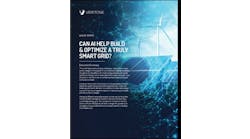Energy efficiency is increasing the use of web-connected devices such as smart phones that consumers use to control appliances and lights in the home. But does this translate to higher electricity savings than what’s saved through the devices?
Unlikely, says Jun Shimada, CEO and founder, ThinkEco, which helps utilities reduce peak demand. In fact, he says, smart phones are allowing utilities – through their customers – to achieve savings that weren’t possible before.
Here’s an example: Window air conditioners in the summer are huge electricity users, and many are up to 15 years old. When utility customers use their smart phones to turn these old, inefficient air conditioners on and off, they can reduce a utility’s peak demand by up to 20 percent, he says.
The company has run programs in Baltimore and Washington, D.C., that achieved this savings and is planning programs in San Antonio and Chicago.
Many utility customers like to pre-cool their buildings before they get home from work. With smart phones, they can do this remotely, cutting back on the amount of time the units are operating, says Shimada.
“Until recently, this was an untapped source of energy efficiency,” he says.
The company is also working on programs that allow users to control their washing machines, dishwashers and large kitchen appliances using their smart phones, efforts that can yield up to 10 percent reduction in peak demand, he says.
However, it’s a balancing act to ensure that the savings is achieved in an efficient manner, says Shimada. “If a consumer hits a button on a mobile phone, you need an immediate result,” he says. “This requires specialized software and hardware.” The company aims to ensure that consumers – and utilities – see the savings quickly, without draining the battery of the smart phones.
What’s next in smart phone controls? Controlling water coolers and coffee makers in office buildings, he says. This can yield 8 percent to 10 percent peak demand savings.
Yes, efficiency efforts are boosting electricity use by smart phones. But so far, the benefits outweigh the extra kilowatt-hours consumed, he says.






